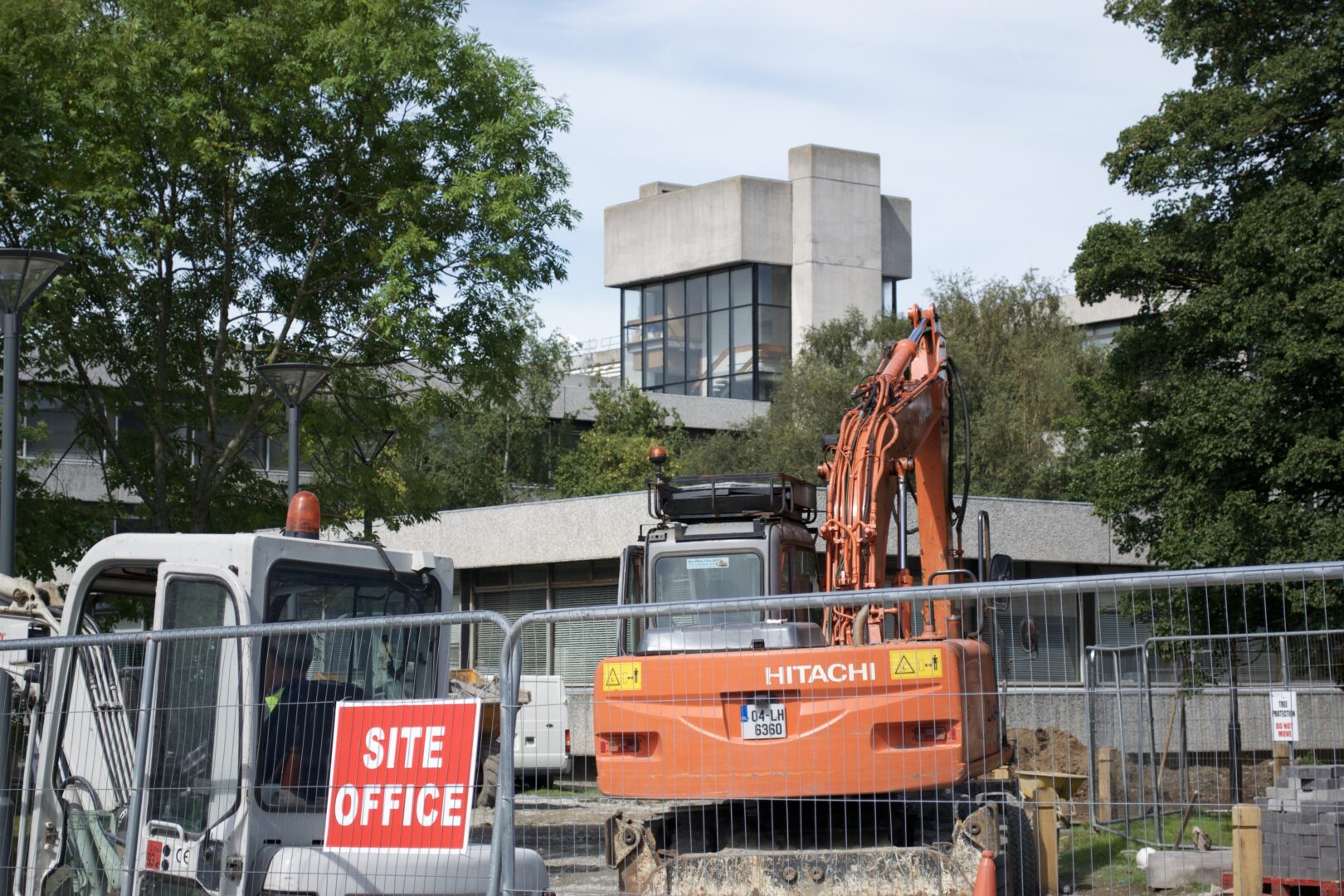Ambitions for an eight to ten story high ‘Gateway’ building by the Stillorgan entrance have been revived by UCD in the college’s campus development plan for 2016-2026 launched yesterday.
The Gateway project was a plan to develop a massive superstructure along UCD’s main entrance on the N11 Stillorgan slip road.
The project was the cornerstone of a previous campus development plan back in 2004, but was shelved after the financial crash in 2008 due to a period of declining state funding for third-level institutions.
It was described at the time by the college administration as a future “landmark entrance to UCD”. Proposed amenities of the Gateway Project included a conference hotel, spa, arthouse cinema, office space, student residencies, a supermarket, and retail space.
The design and masterplan for the Gateway has already been completed by Ingenhoven Architects, a German firm, who were chosen after an international competition that drew interest from 62 firms from across the globe.

Image: Design of Proposed UCD Gateway Project by the Stillorgan Road
The scale of the previously planned development was set to encompass 10% of the entire campus in UCD, covering 13 of the total 132 hectare Belfield campus.
The latest campus development plan makes no specific mention of the Gateway project, but does however designate the area (in dark green) by the main entrance to UCD on the Stillorgan road for a future new development of between 8 and 10 stories high.

Image: Campus Development Report 2016-2026.
Newman Building Refurbishments
The Newman ‘Arts’ building is set to have huge refurbishment works done as one of the biggest short-term projects UCD commit to in their campus development plan for 2016-2026.
The aim is to see a total 50,120 square meters of the building refurbished, as well as a further new 10,400 square meters built. The plans to build would primarily see potential new floors added to the Arts building, but only between the current one and five stories height restrictions.
Other buildings UCD aim to refurbish include the Tierney building, the Science Centre, and a major project to do up the entire Glenomena student Residencies.
However, the Agricultural Science building is not listed as scheduled for any major refurbishment work. The Ag Science building is commonly identified alongside the Newman building as being older and in poor condition.
The Ag Science building is not marked as a priority for short-term development, and is classed by the report as a “potential future building works location”. The allocation of upcoming building works will see only 1,200 square meters to be refurbished in Ag Science, compared to 4,808 sq/m in the Tierney building, where the UCD President Andrew Deeks and college administration reside.
Despite the lack of refurbishment works scheduled for the Agricultural Science building, the campus development report recognises that there are existing issues with “building condition, functional suitability and regulatory compliance” among such older campus buildings. The report estimates that a total 34% of UCD’s buildings are in need of major work.
The college states the cost of the developments and construction works will be €775 million overall. The funding for the plan UCD claim will be made up from the Irish exchequer, industry partners, philanthropic donors, and the university itself.
Plans to Double On-Campus Accommodation
The campus plan also commits to doubling the number of on-campus accommodation by building an additional 3,000 new units over the next ten years. The Roebuck area of campus is identified as the main location for this large scale project to increase student on-campus accommodation. The cost of these new proposed student residencies is expected to be €300 million.
The drive for more on-campus accommodation has been part of UCD’s emphasis to attract more international students. The number of international students studying in UCD has risen from 4,691 in 2011 to 6,588 in 2015. And in 2013 the college took the decision to give international students priority for on-campus accommodation over third-year Irish resident students as was previously the case.
The Tribune can reveal information from university finance reports shows that the income from international student’s high fees is a key factor in UCD’s pivot to attract those students from abroad.
The financial assessment of the 2013 President’s Report states that “international student recruitment” provided a “valuable source of non-Exchequer funding” and income for UCD.
International (non-EU) students pay fees of over €15,000 to study in UCD. This is compared to the total €9,000 the college receive from Irish students (between the student’s Contribution Charge and funding received per student from the Irish Higher Education Authority).
Prices for on-campus accommodation have also been increased by 20% in the last two years, as part of a decision made by UCD in 2013 to raise on-campus accommodation rates by 40% over a number of years.
_________________________________________________________________
Jack Power | Editor


I see the athletics track has completely disappeared from the plans. Shocking.